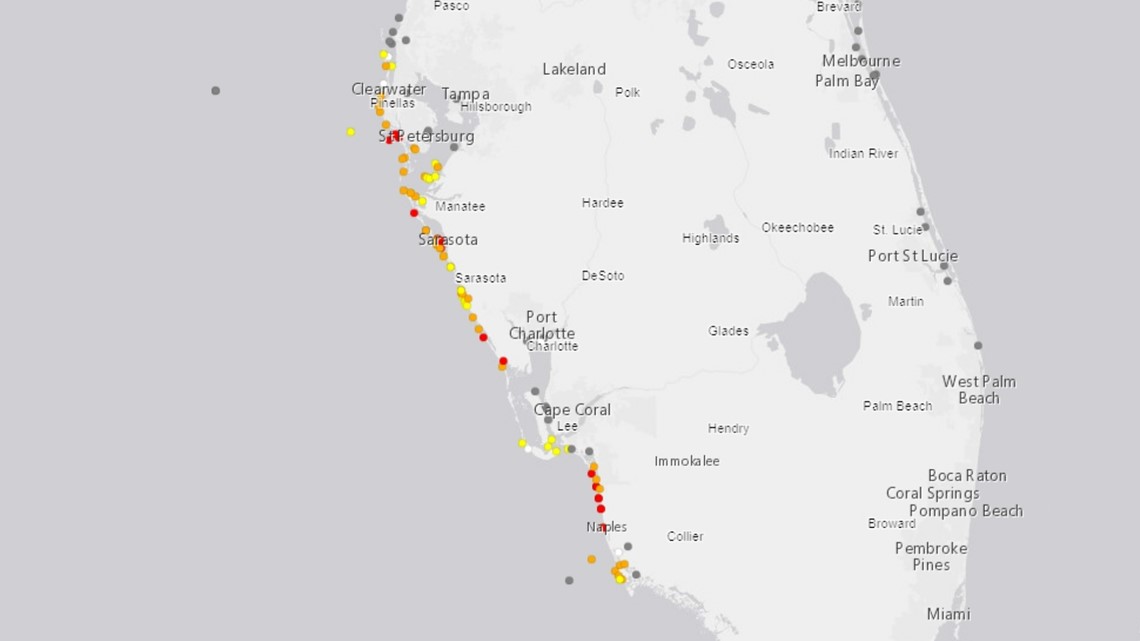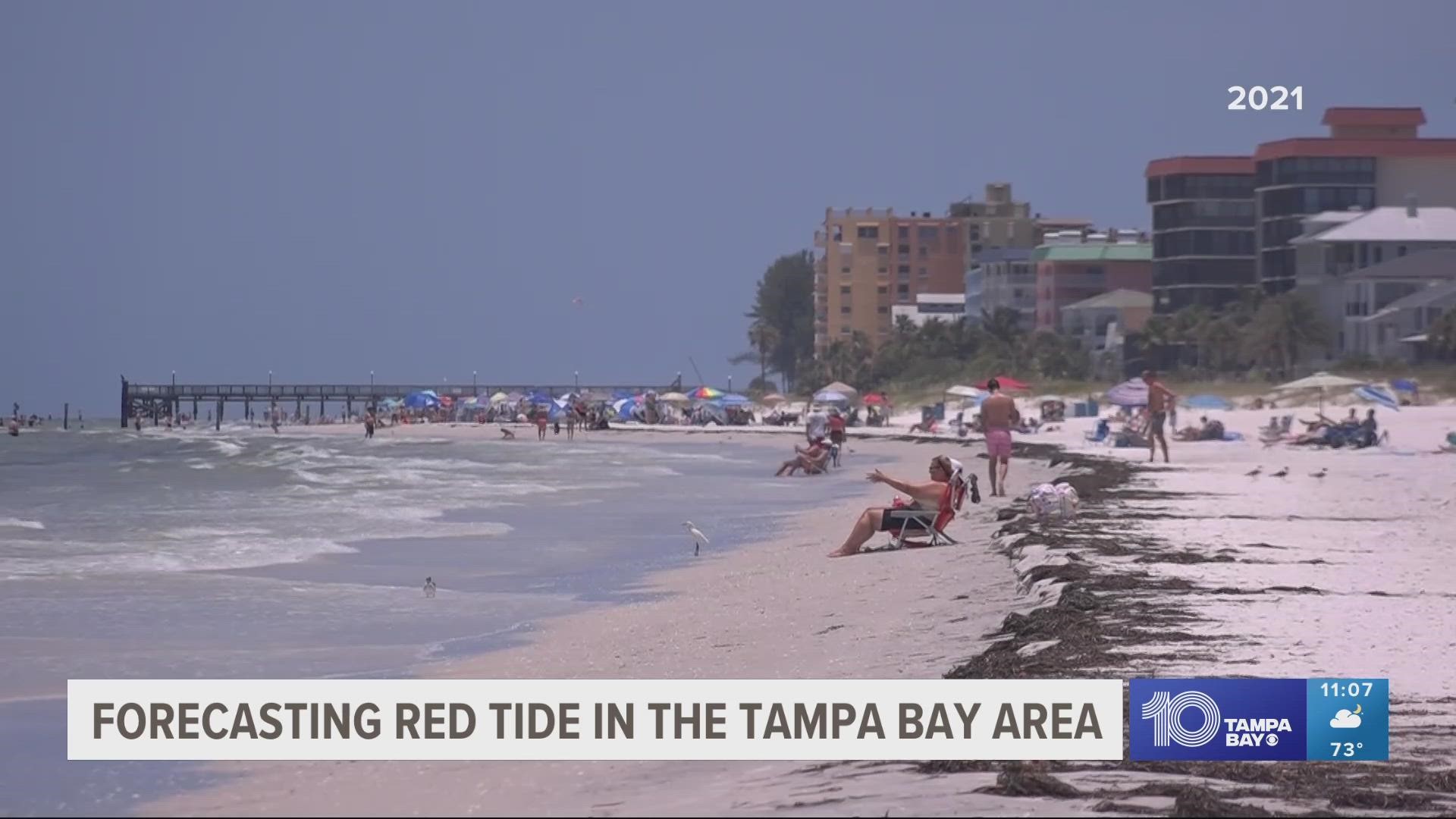ST. PETERSBURG, Fla. — Forecasting red tide is complicated, but it's something Tampa Bay area scientists are able to do.
Many coastal beaches are experiencing medium to high concentrations of red tide. That leads to people having respiratory issues like coughing when they are on beaches such as Madeira Beach.


Scientists at the University of South Florida's College of Marine Science forecast red tide in two ways.
"The first one we call seasonal prediction," Associate Researching Professor Yonggang Liu said.
To get the seasonal forecast, Liu researches currents to determine if there will be a major red tide event on our coast in the fall.
When there’s red tide present like we have now, they can look at a short-term prediction.
"Once red tide occurs on our coast, then we will use our coastal ocean circulation model to track where the cell will go in the next 3.5 days," Liu explained.
Over the weekend, researchers predicted red tide was moving northward toward Bay area beaches.
They are able to determine the current status from water samples taken by scientists at the FWC Fish and Wildlife Research Institute.
"We bring that back to the laboratory then count the cells under the microscope," Liu explained.
With that information, scientists measure the concentration which then allows them to determine just how bad red tide is.
Currently, we are seeing red on the map, meaning high concentrations of Karenia brevis. That is the toxin that causes red tide.
Due to limited samples taken over the weekend, Liu's forecast for the next 3.5 days depends on the wind.
"According to our model forecast, the coastal ocean circulation is shifting to the upwelling pattern in the next three to four days in response to the local wind forcing, with the surface currents directed down shelf and offshore, and the near-bottom currents directed down shelf and onshore," Liu said. "Such upwelling circulation pattern may help to transport the nearshore red tide cells away from the coast, potentially reducing the red tide problem here.
"However, the near-bottom onshore flow may bring in new water from offshore to compensate for the loss of water from the surface layer on the coast. If there are still red tide cells offshore at the subsurface layer, they could be brought to the coastal area, further complicating the red tide problem. We don't have enough observations offshore to provide an accurate assessment on this."
For more information and to see their research, you can visit their website.

